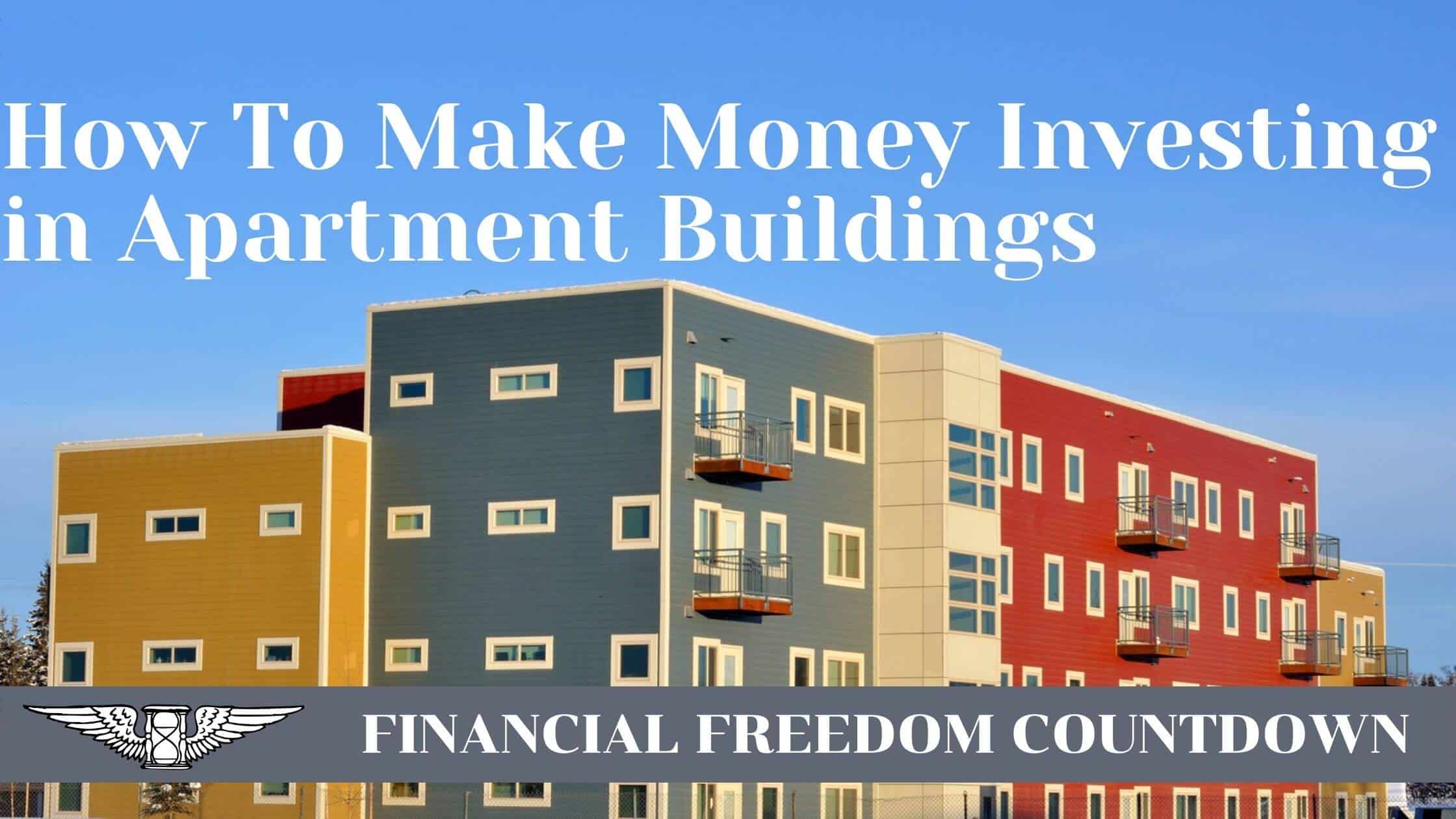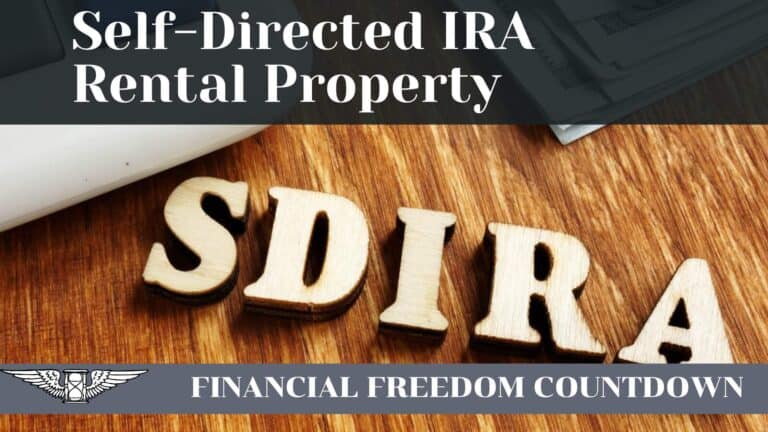How To Make Money Investing in Apartment Buildings

Investing in real estate can either be a hands-on investment or a passive income, depending on which method you choose. Most people invest in real estate when they buy their own homes. Some take it further by owning a couple of rental homes.
Investing in apartment buildings takes it a step further. Apartment buildings can be an excellent investment, but it is hard to know where to start. It can be challenging to find suitable investments, especially if you don’t have much experience in the market. There are so many things to think about – from the location and size of the building to the potential returns on your investment.
Why Invest in Apartment Buildings
Currently, the real estate market is hot, and in some cities, too hot. In many cities across America, home prices have become so high that they price out many potential homeowners, especially true for would-be first-time homeowners.
Many people looking for a new home are getting outbid by those with all-cash offers. And in many cases, being outbid by tens of thousands of dollars. Another reason home prices have been soaring in price is because of the lack of homes for sale.
As more and more people become priced out of buying a new home, they have to rent an apartment while waiting for housing prices to settle down. And other people enjoy living in an apartment because of the amenities they offer and not having a yard to maintain.
Because of the low inventory of homes for sale, apartment vacancies have dropped. There has never been a better time to invest in apartment buildings than today.
Apartment buildings are a great investment opportunity. They offer stability and security and provide a steady income stream to help you achieve your financial goals and create generational wealth.
The Benefits of Owning an Apartment Building
Investing in apartment buildings is a lucrative way to provide a stable income. As long as single-unit houses are in short supply and there is an increasing need for affordable housing, apartments will be in demand.
The market for those wanting apartments is increasing from groups like students, lower-income workers, singles, and young professionals, especially in urban areas and college towns. There are several benefits to owning an apartment building: better investment return, scalable property management, tax advantages, and forced appreciation.
Better Return on Investment
The cash flow from owning an apartment is also called the net rental income, which is income from the rent after deducting all expenses. Expenses include maintenance, upkeep of the property, mortgages, and insurance payments.
Like rental houses, the standard lease is 12 months. You lose income between tenants moving out and the new tenant moving in with a rental home. But with apartments, you don’t have to go without payment with tenant turnover. Sometimes, it is easier to find qualified new tenants to fill up a few vacant apartment units than one higher-priced rental house.
Efficiencies of Scale
Owning one or several rental houses can be a full-time job unless you hire a management company or full-time handy person to do this for you.
A successful landlord of single-family homes has typically to be knowledgeable in fixing any minor repairs that a tenant might need. If a landlord doesn’t know how to fix plumbing problems, electrical work, painting, or other maintenance problems, they will have to hire a company to manage the property. And this will cut into cash flow.
Unless it is a small apartment, a management company will need to be used to maintain and run the property. But since an apartment will have considerably more income each month, hiring a management company will be much more cost-effective. An apartment building can also afford to hire a full-time handyperson to perform minor repairs and be available onsite for emergency repairs.
Tax Advantages of Owning an Apartment Building
One of the best reasons to invest in apartment buildings is the favorable tax laws in the United States for real estate owners. You can use several tax strategies to lower the tax obligation when owning an apartment building.
- Depreciation
- Cost Segregation
- Bonus Depreciation And Section 179
- Opportunity Zone
- Section 1031 exchange
- Capital Gains
- Mortgage Interest Deduction
- Refinancing
Depending on how the investment property is set up, a tax accountant can find numerous ways to lower the amount of taxable income, which will enhance the overall cash flow.
Forced Appreciation
Forced asset appreciation is another benefit to investing in apartment buildings. There is a difference in how a single-family home appreciates compared to an apartment building.
A single-family home will appreciate when similar homes in the neighborhood increase in value or the entire neighborhood increase in value for some reason.
The way an apartment building appreciates is driven by the rental income they produce. Cap rate is one of the primary methods used to evaluate a rental property.
As the apartment building owner, you can increase the value of the apartment building by using value add real estate strategies to create additional income streams and charging more for rent.
How To Make Money Investing in Apartment Buildings
The net operating income (NOI) of an apartment complex is the measure of its profitability. The more cash a property generates after all expenses have been paid, the more it is worth.
A building is worth 5 times its net operating income in San Francisco. This 5 times multiplier is referred to as the capitalization or cap rate for short. Cap rates in high cost of living areas are lower than in other parts of the country.
Assume an apartment building has a net operating income of $500,000, which would make it worth $2.5M.
You could create $250,000 in value if you were able to increase rents or cut costs such that the apartment building generated an extra $50,000 each year (a cap rate of 5 times the additional income of $50,000 is an additional $250,000 in value).
Let us look at a specific example where you can pull simple one-time levers to generate additional cash flow.
Assume you bought a 50 unit building
- You realize the rent for each unit is $50 below market. Bumping up the rent to market level gives you an additional $30,000 annual increase in rental income.
- Some tenants are hoarders and pay for a storage unit offsite. You could provide storage lockers onsite and charge extra. The tenant pays a lower amount than the storage unit and can easily access her stuff. You get an increased cash flow every month. It is a win-win situation. You get an additional $6,000 by charging 10 units an additional $50 per month for storage units.
- You might decide to install a vending machine on site. The tenants don’t need to drive to the store for a quick snack, and you get additional income from your real estate portfolio. Assume $1,000.
- You notice that the rental units do not have their individual utility meters. Rental property owners can implement a Ratio Utility Billing System (RUBS) to eliminate the utility expense from their balance sheet and promote conservation. With a $20 per unit decrease in utility expense per unit, the NOI increased to $20*50*12 = $24,000
| # | Improvements | Additional Value |
|---|---|---|
| 1 | Market rate rents | $50/month * 50 units * 12 months = $30,000 |
| 2 | Storage Units | $50/month * 10 units * 12 months = $6,000 |
| 3 | Vending machine | $2,000 |
| 4 | RUBS to reduce utility expenses | $20/month * 50 units * 12 months = $12,000 |
| Total increased income | $50,000 | |
All the changes you have incorporated result in $50,000 annual increase in NOI, and your asset is now worth an additional $250,000.
The examples above were simple ways to make money investing in apartment buildings. You could also remodel each unit as the tenant’s lease expires and rent it for a much higher price, further increasing the value of your asset. Keeping detailed records of the remodel enables you to apply a cost segregation tax-saving strategy to shield your income.
You can add more value to an apartment complex by providing a gym, indoor pool, front desk service, laundry rooms, covered parking, and other services. There are quite a few ways to add value to the area and dramatically increase cash flow while the value appreciates.
Due Diligence for Investing in Apartments
Once the decision to invest in apartment buildings has been made, it is time to look for the best apartment. Owning and maintaining an apartment building is more demanding than owning a rental home but more financially rewarding. There are a few steps to follow before investing in an apartment.
Apartment buildings come in all sizes. An apartment building could be an old Victorian house that has been divided into six separate units that qualify as an apartment. Or there are large apartment complexes with 300 units or more. Before looking for an apartment building, know your budget, and understand that managing six units is much easier and less costly than a large complex.
Now it is time to search for apartment properties for sale. I can explore on my own on a website like LoopNet or use a professional real estate agent. I can join a real estate investing club, which will introduce me to other property owners who might know of properties for sale. The advantage of using a commercial real estate agent is that they will have access to multiple listing services.
Next, it is time to do the due diligence. Specific factors include the location, the number of units in the apartment complex, the building’s condition, and offered amenities. It is crucial to hire an inspector.
After I bought the property, finding out that it needed a new boiler meant I didn’t do proper due diligence. Reasonable due diligence should include at least the following:
- The building needs to be appraised using market comparisons.
- The potential income along with the replacement approach. The replacement approach is when an investor will estimate how much it would cost to build a comparable building.
- A financial audit report that includes a trailing 12-months and 3-year profit and loss statement
- Have a property condition assessment done by a third party.
- Do an environmental site assessment check for any traces of contaminants or dangerous chemicals present.
- Know the property’s estimated occupancy level.
- Have a lease audit and rent roll analysis done that looks at the lease in various ways, such as unpaid rents, late rents, and billing schedules.
- Get a site survey and title report that ensures no competing legal claims to the property. It will usually require a site survey that will confirm the property boundaries.
6 Ways To Invest in Apartment Buildings
Buying an Apartment Building Yourself
If the funds are available, buying an apartment without partners is the best. This way, I make all the decisions and keep all of the profits. If you have the money, this is the way to go.
It would be the most expensive route and require the most upfront capital. Do not just jump in and buy what looks like a lovely apartment building, do all of the research first.
When an investor goes it alone, securing the loan is necessary to finance the purchase of the apartment building. There are several ways to get a loan, including seller financing, commercial banks, or private loans. A traditional loan can be from a bank or a credit union. There are also government-sponsored agency loans like Freddie Mac, Federal Housing Authority (FHA), or Fannie Mae.
There are numerous qualifications to qualify for one of the government agency loans. The requirements vary with each agency.
Before considering one of these loans, check to see if the loan has a minimum occupancy requirement and whether or not the loan is assumable or non-assumable.
The terms of apartment loans can range from several years to 25 years. The loans can be fixed or adjustable. When interest rates are rising, it is risky to get an adjustable loan. I always know what is due with no surprises with a fixed loan.
To buy an apartment complex, you’ll almost certainly need to obtain a commercial loan. Commercial banks, seller financing, and private loans are all potential sources of funding. Real estate mortgage notes are another option. Recourse loans and non-recourse loans are two types of loan.
A recourse loan means that the creditor can seize your personal property if you should default. With a non-recourse loan, the creditor cannot go after the borrower’s personal property if there should be a default.
A Federal Housing Authority multifamily loan from the U.S. Department of Housing and Urban Development could be one option. ranges between 83.3% and 87% LTV (loan-to-value ratio) and starts at $2 million. The terms on these loans can go up to 35 years.
Loans insured by Housing and Urban Development (HUD) are non-recourse loans. If you do not want income or rent restrictions on your apartment, you can finance under HUD/FHA 223(f).
Commercial lenders will focus more on the property’s income potential and less on the borrower’s finance or credit history.
Buying an Apartment With a Partner
Teaming up with a partner has its advantages, especially if the combined finances make getting a commercial loan easier. Another benefit could be when one of the partners is experienced buying commercial property or has contacts in the business.
For someone new to apartment building investing, teaming up with a more knowledgeable partner is a great way to gain experience in real estate investing. Since you will be working with a partner, it is necessary to choose your partner carefully. This relationship will require many decisions that will have to be made and involve a lot of money.
There are several real estate investment risks so one should have an appropriate risk mitigation plan in place. Even though the profits are cut in half with a partner, the risks are also cut in half when teamed up. Otherwise, all of the same information and due diligence that needs to be done for a single investor also needs to be done in a partnership. Ensure everything is spelled out in a partnership agreement before buying a property.
Real Estate Syndications
Another common question people will ask me is whether there is an easier way to invest in apartments. The answer is a real estate syndication. If you do not have the money to invest in apartment buildings on your own, real estate syndication is a great way to get started in apartment building investing.
As a real estate syndicator, you will raise money from a group of investors who pool their capital and jointly purchase real estate properties. These properties can be apartments, self-storage units, mobile home parks, or other prominent real estate properties.
The syndication has two main parties: the syndicators, more commonly known as the general partner(s), and the passive investors. The general partners are responsible for the following:
- Completing all due diligence on properties
- Underwriting all deals
- Secure the financing
- Building the business plan
- Negotiating with sellers
- Finding investors and raising capital for each transaction
- Working with the property management company
- Handling investor relations and asset management
The passive investor will provide a portion of the money needed to acquire the property. The passive investor owns a share of the purchased property in exchange for their money. Investing with real estate syndication allows an investor to reap the benefits of cash flow and tax breaks without the stress of being a landlord.
Passive investors will receive passive income in monthly or quarterly returns. When the property is sold, they will receive a return on their investment while at the same time achieving equity pay down, real estate tax benefits, and appreciation.
Other benefits of real estate syndication are control and diversification. Instead of owning just one property, the pool of investors in the syndication can buy several apartment buildings or other property types, diversifying the portfolio.
As a passive investor in the real estate syndication, you will control the properties you want to be an owner of. Unlike publicly traded real estate investment trusts (REITs), you will choose which properties to invest in.
The SEC has defined strict criteria for raising money from investors. Ensure that you follow the legal process and have a team in place before undertaking the role of a General Partner
Real Estate Crowdfunding
Real Estate Crowdfunding, also known as crowdfunded investing or property crowdfunding, allows several investors to pool their money together and buy a real estate investment property with the contributed pool.
Crowdfunding for real estate investors is a way to diversify their investments and own multiple properties with less risk than if they were doing it alone. The process gives individual investors access to the real estate market without owning, financing, or managing properties.
For a developer or a real estate professional, raising money from real estate investors helps finance the project without needing to fund the entire commercial real estate development by themselves.
Real estate crowdfunding has become one of the most popular ways to diversify a portfolio and a way for those interested to invest in apartment buildings and other forms of real estate.
When an investor invests their money using real estate crowdfunding, they do not have to worry about the maintenance of the property, mortgage payments, or tenants. Real estate crowdfunding is an excellent way to invest in apartments, collect real estate passive income and profit when the property is sold.
One advantage of real estate crowdfunding is it can offer investors access to exclusive property investments that might not be available to the general public.
Another advantage is they usually pay higher returns to investors than a publicly-traded REIT will. But with the higher return, there is a higher degree of risk associated with real estate crowdfunding.
Crowdfunding real estate sites are open to all real estate investors but differ on their financial requirements. Some allow investors with just a few hundred dollars to invest, while other platforms might restrict offerings to individuals meeting accredited investor qualifications.
As with most investments, there are pros and cons to crowdfunding real estate. Some of the pros include:
- Allows investors to diversify their financial portfolios more easily.
- Usually pays a more significant dividend than publicly-traded REITs.
- It eliminates the everyday worries of being a hands-on landlord.
- Offers unique properties that are not available to the general public.
- Minimal upfront costs and ongoing investment costs.
- Investors do not have to qualify for loans to buy real estate properties.
- Real estate tax benefits can be provided to the investors even though they do not directly manage the real estate investment.
The cons of crowdfunding real estate investing include:
- Assets are not very liquid and cannot be sold off quickly compared to publicly-traded REITs,
- There may be a management fee or advisory fees by the crowdfunding websites,
- Some crowdfunding platforms require members to be well-capitalized to participate.
You can do real estate crowdfunding through multiple online crowdfunding websites. The best real estate crowdfunding platforms depend on your goals, investment amount, and accredited investor qualifications. Different crowdfunding platforms have distinct strengths, and one investor’s needs may not work for another. Since each platform has different offerings, it might not be a bad idea to sign up for all.
| Investment Platform | Open to | Type of Investment | Minimum |
|---|---|---|---|
| PeerStreet | Accredited Investors | Residential | $1,000 |
| EquityMultiple | Accredited Investors | Commercial | $5,000 |
| CrowdStreet | Accredited Investors | Commercial | $25,000 |
| AcreTrader | Accredited Investors | Farmland | $10,000 |
| FarmTogether | Accredited Investors | Farmland | $15,000 |
| Fundrise | Accredited and non-Accredited Investors | Residential | $10 |
| Streitwise | Accredited and non-Accredited Investors. And also foreign/non-USA investors | Commercial | $5,000 |
Private Real Estate Funds
Private real estate funds could be another method to invest in apartment buildings where individuals pool money used by the fund manager to purchase real estate asset assets.
The collected money is paid into a real estate investment fund, like a holding company. Properties can include apartments, houses, condos, malls, hotels, office buildings, retail space, and other real estate types.
The biggest con with private real estate funds is the lack of verification of prior fund performance. Since the real estate funds are not public, records are not scrutinized to the same extent as public REITs. Also, it is hard to obtain details on the fund manager’s past performance. With real estate crowdfunding platforms, you can check how the past investments of the real estate syndicator have performed.
Publicly Traded Real Estate Investment Trusts(REITs)
Anyone can buy real estate investment trusts (REITs) on the stock exchanges. All that is needed is an account with a brokerage firm.
REITs trade every day, just like stocks. In some ways, REITs are like mutual funds. They own a basket of income-producing real estate investments.
Shareholders of REITs will own a piece of these real estate investments without having to buy or manage real estate properties. REITs pay dividends, usually quarterly, but in some cases, monthly.
For a stock to be considered a REIT, it has to meet the following requirements:
- Obtain at least 75% of the gross income from rents or interest on mortgages that finance real property
- Invest at least 75% of total assets in real estate, U.S. Treasuries, or cash
- Be an entity that is taxable as a corporation
- Pay a minimum of 90% of taxable income to the shareholders in the form of dividends each year
- Have at least 100 shareholders after its first year in existence
- Be managed by a board of directors
- Have no more than 50% of the shares held by five or fewer people
REITs can hold all properties like apartments, offices, malls, healthcare facilities, houses, cell tower property, warehouses, self-storage units, etc.
They are a great way to diversify a portfolio into real estate without owning the property. They are more liquid than crowdfunding real estate and can be sold quickly through a broker.
Even though REITs are considered real estate, there are no tax breaks like owning real estate yourself. And dividends are taxed as regular income. Like other stocks, they are at risk of the usual ups and downs of the stock market.
With REITs, you benefit from diversification across several properties for relatively smaller amounts. You can buy publicly-traded REITs using no-fee platforms like M1 Finance for $10. Check out my M1 Finance review for more details on dollar-cost averaging your REIT purchases. The large fund families like Vanguard, Schwab, Fidelity all have real estate index ETFs trading under the following ticker symbols – VNQ, SCHH, FREL, respectively.
Final Thoughts on Investing in Apartment Buildings
Real estate is one of the best assets to own in a diversified portfolio. There are numerous ways to invest in apartment buildings. I can buy an apartment myself, which allows me to keep all the profits. But that also means I have to come up with all of the money on my own. Or I could have a partner and split the profits and the upfront money.
Real estate syndication structures make it much easier to own real estate along with a group of other investors. Crowdfunding real estate is another option similar to syndications for investors to own apartment buildings without the massive time and money commitment. And the easiest way to own real estate is to invest in a real estate investment trust, which gives me a dividend each quarter.
Readers, have you wanted to invest in apartment buildings? Which route would you prefer?

John Dealbreuin came from a third world country to the US with only $1,000 not knowing anyone; guided by an immigrant dream. In 12 years, he achieved his retirement number.
He started Financial Freedom Countdown to help everyone think differently about their financial challenges and live their best lives. John resides in the San Francisco Bay Area enjoying nature trails and weight training.
Here are his recommended tools
Personal Capital: This is a free tool John uses to track his net worth on a regular basis and as a retirement planner. It also alerts him wrt hidden fees and has a budget tracker included.
Platforms like Yieldstreet provide investment options in art, legal, real estate, structured notes, venture capital, etc. They also have fixed-income portfolios spread across multiple asset classes with a single investment with low minimums of $10,000.





